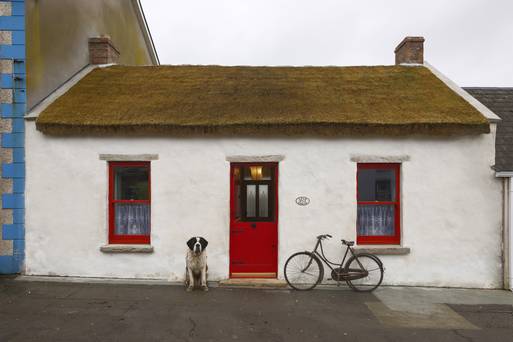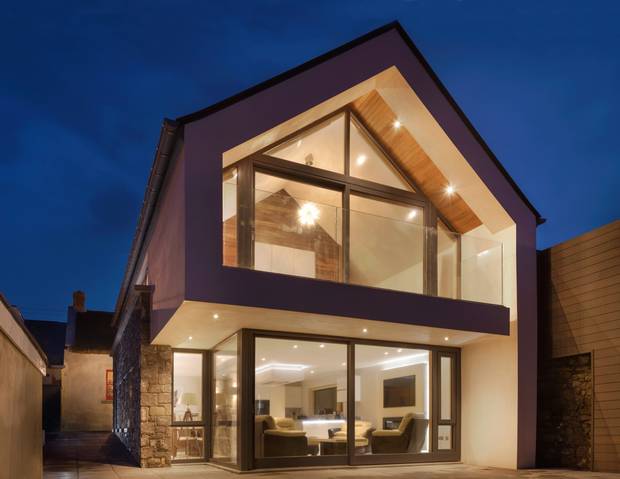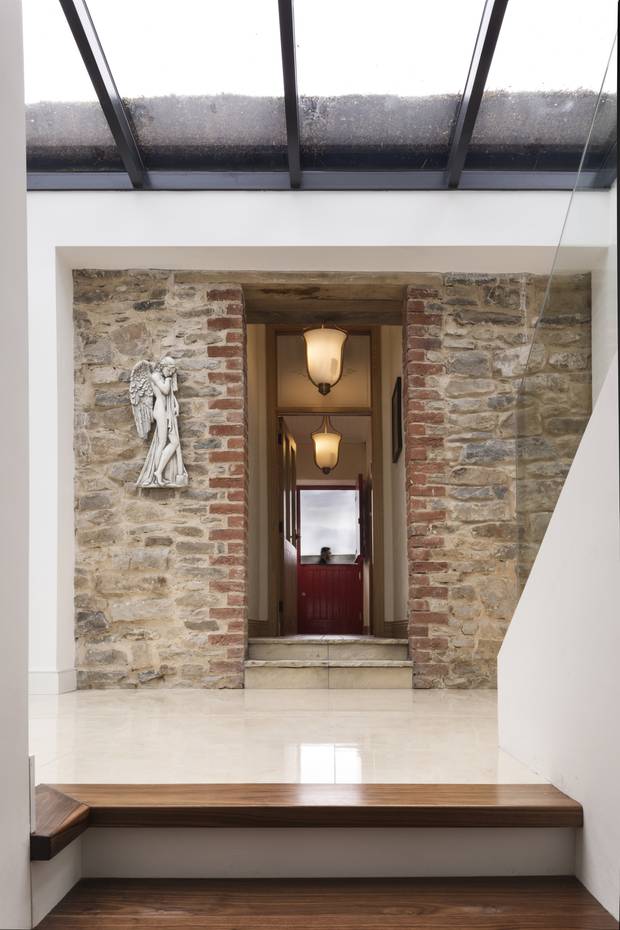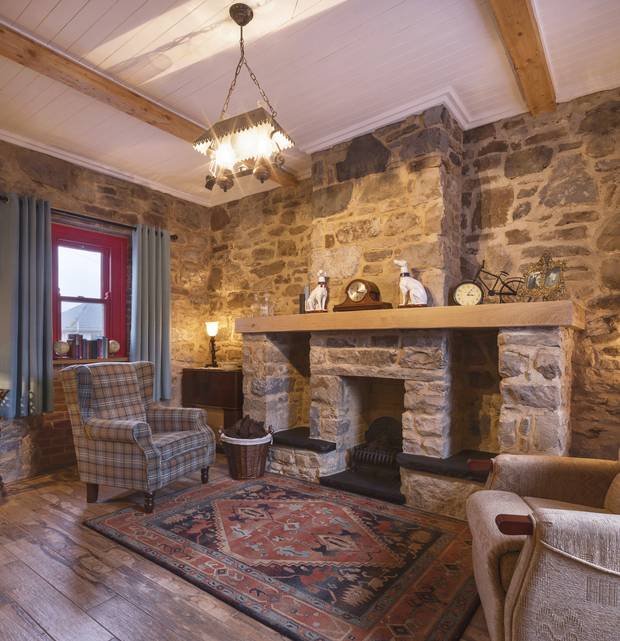A traditional cottage on Bundoran’s Main Street is hiding an amazing secret.
Because what may appear to be a small and quaint thatched living space from yesteryear is anything but.
A restoration just completed by architect Declan McCabe shows how even the smallest town cottage can be transformed with a huge extension into a modern home and without compromising its integrity and character.
Located on the east end of the main street in the popular seaside village, edged by the wild Atlantic Ocean, ‘Teachín Tui +’ is a 200-year-old thatched cottage (+ refers to the extension).
It belongs to a retired couple from Co Tyrone who spent the last two years together with local architect Declan McCabe, of award-winning conservation practice McCabe Architects, painstakingly bringing it back from the brink.
McCabe’s modern yet sympathetic reinterpretation of this Donegal thatch is as imaginative as these humble vernacular dwellings get. Unsurprisingly it has become somewhat of a local attraction since its completion just a few weeks ago.
He told independent.ie “It’s not your typical project. It was a big learning curve and a first for me,” admits McCabe who spent months just researching, planning, sourcing and carrying out feasibility studies to ensure its success.
Originally built in 1820, the simple cottage which is the only surviving example of its type in Bundoran, has been home to a handful of families and served briefly as a small convenience store known locally as O’Brien’s Shop up until the late 90s. When its new owners bought the tiny 430 sq ft property it was in desperate need of repair.
“The roof was punctured with large gaping holes and was letting in rain, the brickwork was crumbling, the floors were rotten and the chimneys had fallen down. At some stage it had also been vandalised and set on fire,” says McCabe.
“My brief was to restore it to its former glory with a contemporary extension so three generations could happily holiday together and maximise the sea views,” says McCabe.
The cottage was stripped back to a skeleton and a long list of traditional methods used to restore it. The roof was re-thatched with a new locally cultivated rye and includes two layers of locally grown sod running in different directions, the chimneys and fireplaces were rebuilt with reclaimed brickwork to match the existing, the unsightly PVC windows were replaced with timber sliding sash ones and the big shop window swapped for a smaller one to restore the visual symmetry of the façade.
In turn, the planners accepted a contemporary one and a half storey vertical extension to the rear which incorporates a fully-glazed gable to maximise the sweeping sea views and provides the owners with the additional space they requested: open-plan living at ground level and two additional bedrooms above, including a master with ensuite, walk-in-wardrobe and balcony. Clever engineering creates the impression that the upper floor is floating above the lightweight glass walls below.
Although the extension is larger than the cottage, it is designed to be subservient and respectful to it, and is physically stepped down so that it’s virtually invisible from the front approach and doesn’t affect the streetscape.
A transparent glazed link acts as a circulation hub between the two spaces but it also cleverly allows both builds to be read as separate, self-contained elements. Although not completely disconnected – corridors, glazed roofs and framed windows offer visual glimpses – there is a marked and intentional division between the old and the new, which is further emphasised by the choice of furniture and décor.
The cottage is cosy and homely and kitted out with salvaged and antique pieces while the extension is white, streamlined and modern.
“There are some hi-tech gadgets but we’ve tried to be as environmentally aware as possible,” McCabe explains. “The thatched roof and flooring have been fully insulated, there’s underfloor heating connected to ground source heat pumps and all of the glazing is triple glazed.” The project demanded a diverse range of both materials and techniques but McCabe’s insistence on using only the best, well-known and respected trades in the industry and the owners’ keenness for locals – including renowned thatcher Ivor Kilpatrick, joiners MacBride Brothers Joinery and experienced stone mason Emmett Friel – helped ensure everything ran relatively smoothly.
“We were also really fortunate to have such skilled and reliable builders in McHugh and Gallagher Builders with their experienced approach and ‘nothing was a problem’ attitude,” says McCabe.
The reaction to the project has been amazing.
“People are quite surprised when they realise that it stretches right back into a contemporary space. Building a pastiche would have been a poor solution,” says McCabe who acknowledges that he’s been incredibly fortunate having such accepting and willing clients.
“With only 2,500 of these thatched cottages left in Ireland our clients should be commended for doing their part to keep another one alive whilst providing an adaptive and sustainable new use for future generations.”
To see more stunning pictures, all by Paul Doherty, visit the McCabe Architects facebook page on https://www.facebook.com/McCabeArchitects
Tags:









